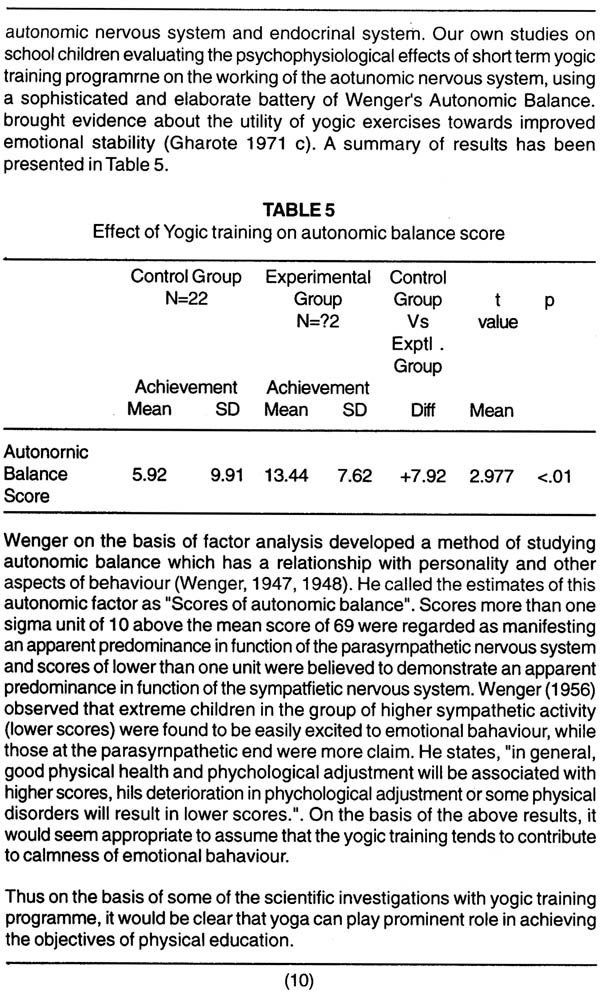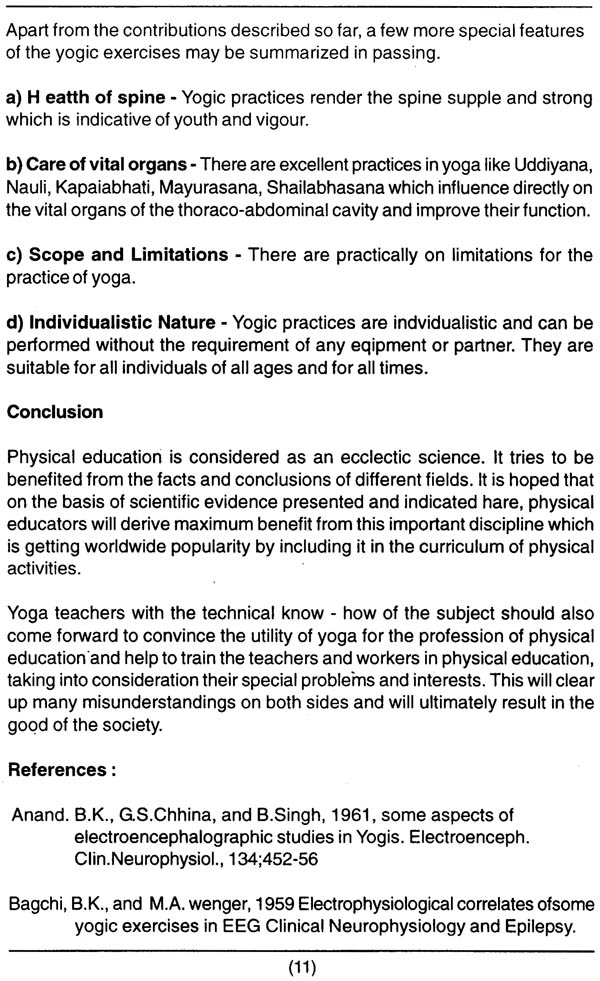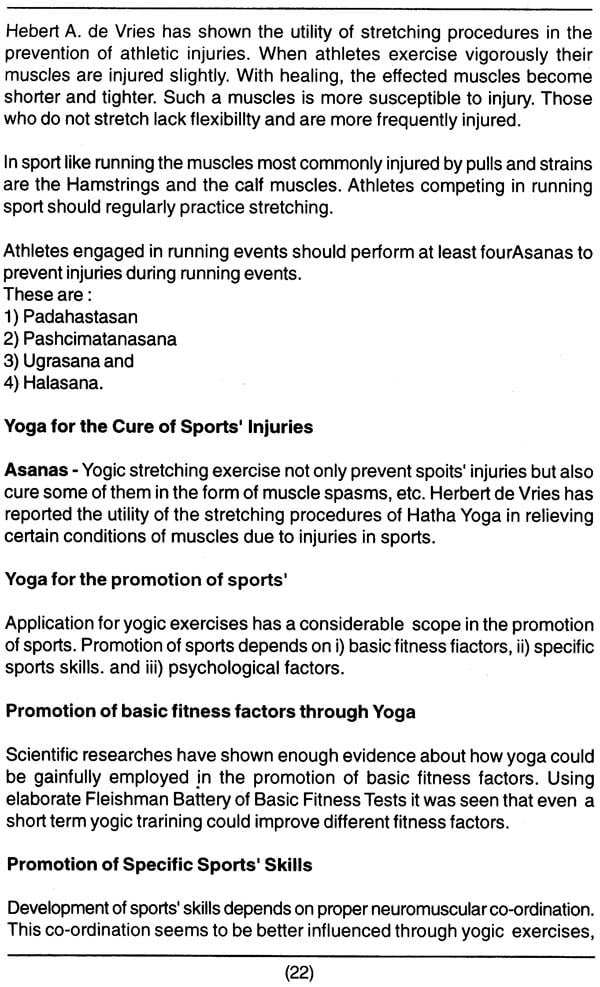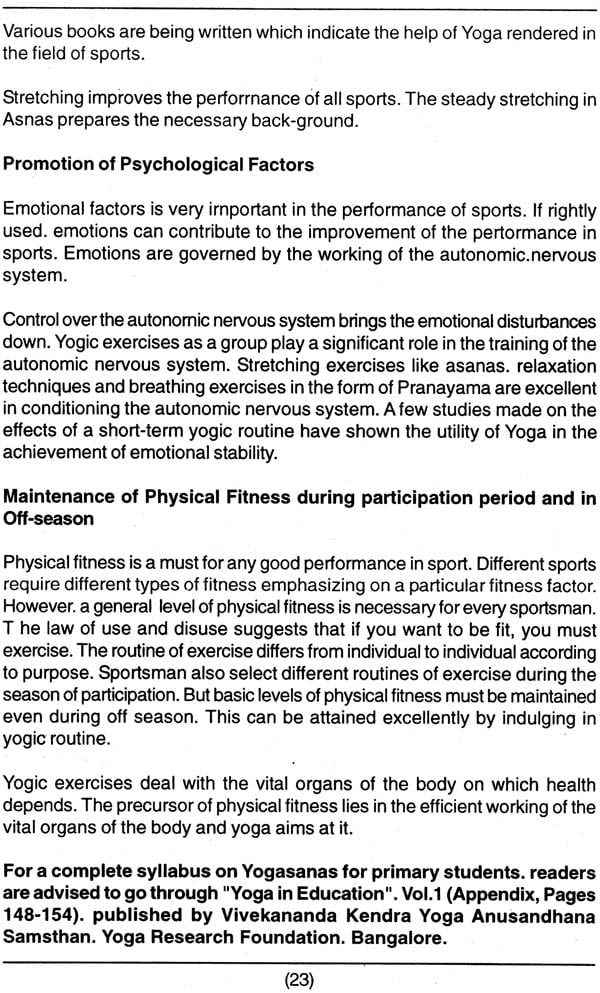
Yoga Applied to Physical Education
Book Specification
| Item Code: | IDJ349 |
| Author: | Dr. M.L. Gharote |
| Publisher: | Kaivalyadhama Samiti Lonavla |
| Language: | English |
| Pages: | 27 |
| Cover: | Paperback |
| Other Details | 8.2" X 5.3" |
| Weight | 40 gm |
Book Description
Introduction
Yoga has a hoary post. Its importance for the spiritual attainment has been recognized through the ages by all the systems of Indian philosophy. However, this application various fields is a new trend. Before we consider the application of Yoga to Physical Education we must first clearly understand the concepts of Yoga and Physical Education.
The Concept of Yoga :
Although the word 'Yoga' has many connotations, etymologically it means 'Integration'. The term 'Samatva' of Bhagavad-Gita convey the same meaning. Other terms like homeostasis, equilibrium, balance, and harmonious development etc. more or less suggest the some thing. The aim of Yoga itself is integration of personality in its all aspects.
In order to help the development of such integration various techniques are employed. This techniques or practices enjoined in Yogic literature and handed down in different traditions also go under the name of Yoga.
The various yogic practices may be classified into (a) Asanas (b) Pranayamas (c) Bandhas and Mudras (d) Kriyas and (e) Meditation.
a) Asanas - These are certain special patterns of postures that stabilize the mind and body. They aim at establishing proper rhythm in the neuromuscular tonic impulses and improving the general tone of the muscles.
b) Pranayama- These are the practices in the control of respiratory impulses which form one of the main channels of the flow of autonomic nerve currents.
c) Bandhas and Mudras - This consist of practices where in one tries to consciously control certain semi-voluntary and involuntary muscles in the body. In these muscles there is an integration of central and autonomic nerve supply. By bringing these muscles under volition one could influence there by the activity of the autonomic nervous system which functions as a whole. Bandhas and Mudras help to tone up the internal organs, decongest them and stimulate their healthy functioning.
d) Kriyas-These are cleaning processes, usually classified into six divisions and therefore they are often called Shatkarmas or Shatkriyas. Each one of these consist of many subsections.
e) Meditation-This is continuum of mental practice involving from initial withdrawal of senses of the complete oblivion of the external environment. Literally, there are innumerable stages and practices, which could be included under this head.
For Undergoing yogic practices an adequate substratum is formed by resorting to a mode of self-imposed code of conduct technically known as Yamas and Niyamas. They form the very basis of Yoga and is considered to be essential part of yogic routine, howsoever on a mild scale.
The nature of all yogic practices is psycho-physiological. Some practices emphasizing control of mental processes directly are more psychological. Other practices are more physical or physiological. It is the letter part of this yogic practice that has become more popular and is being extensively used for the maintenance of health.









